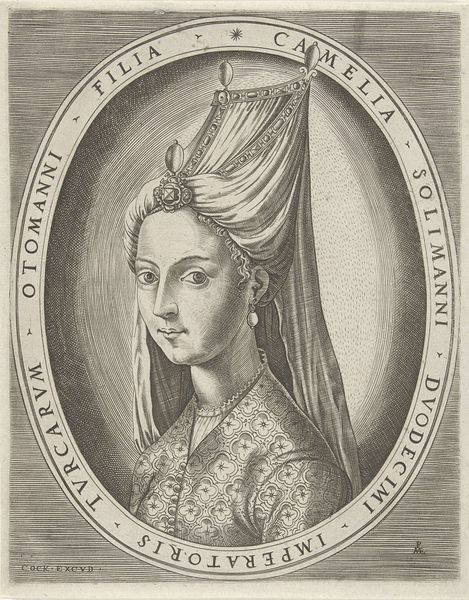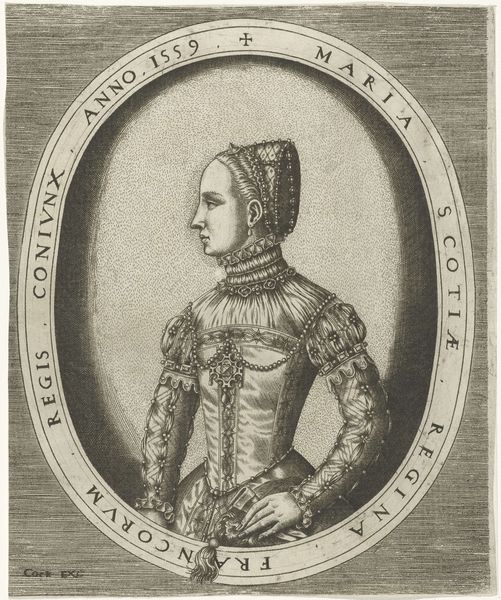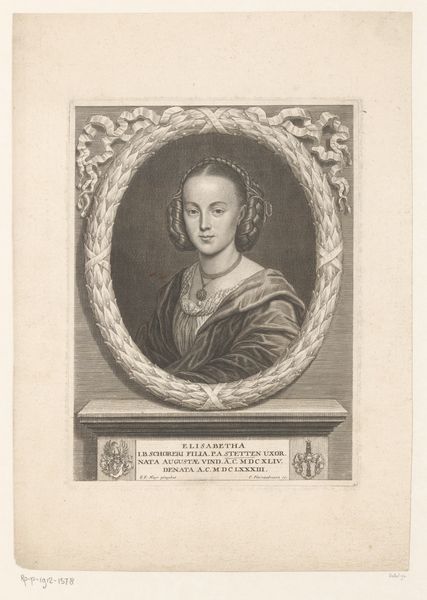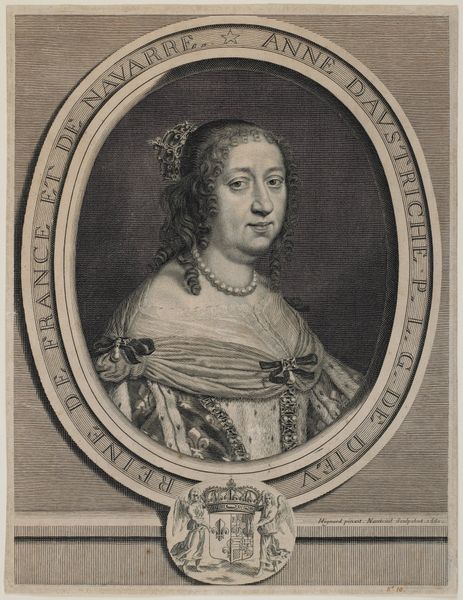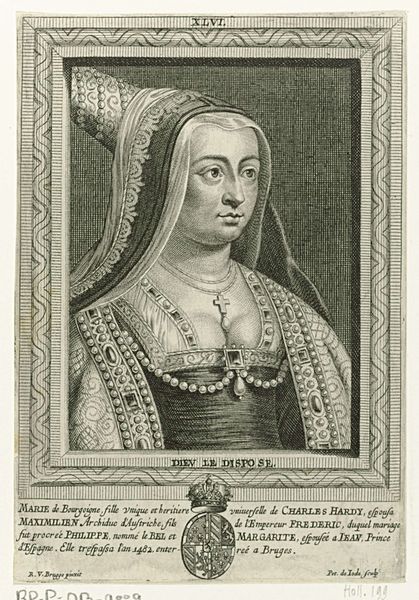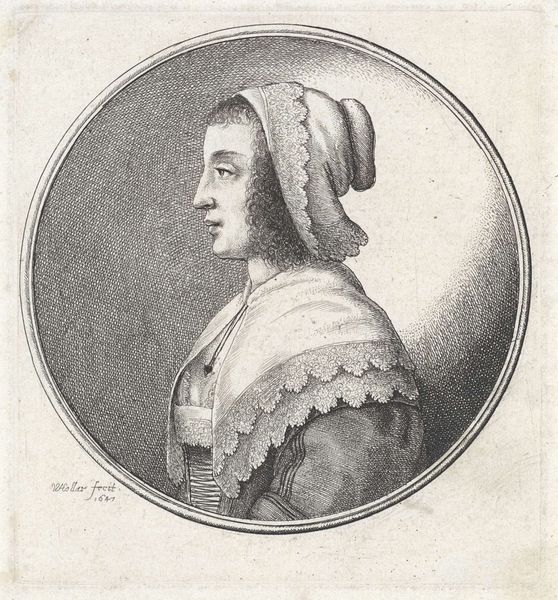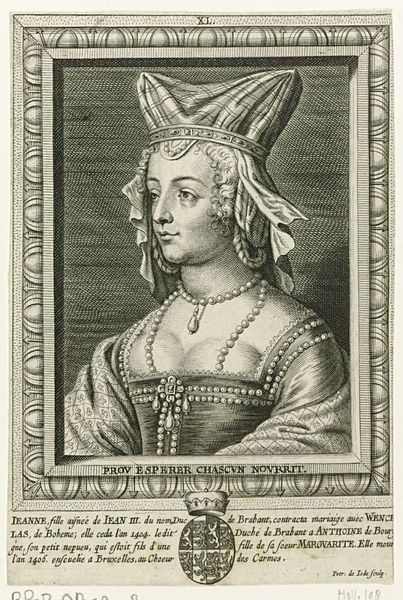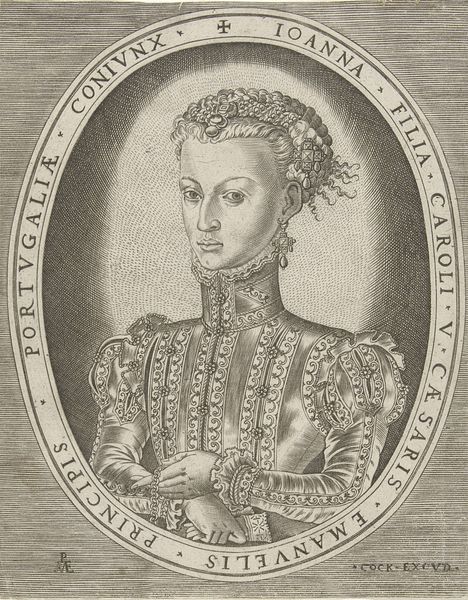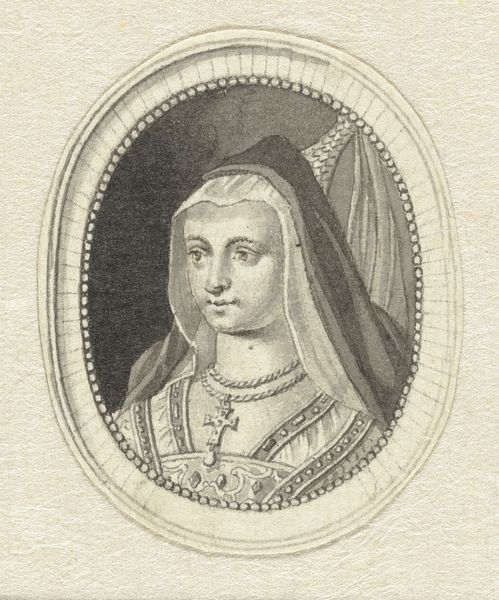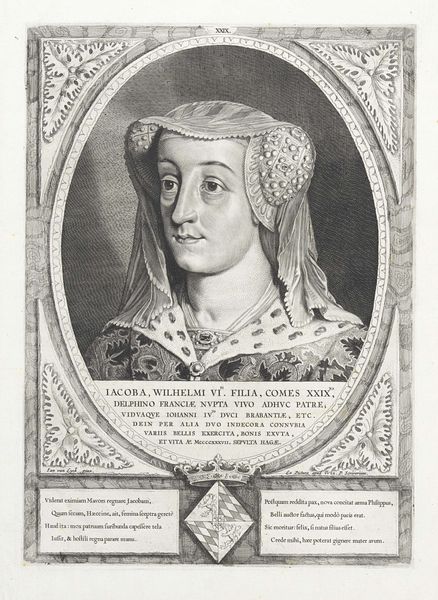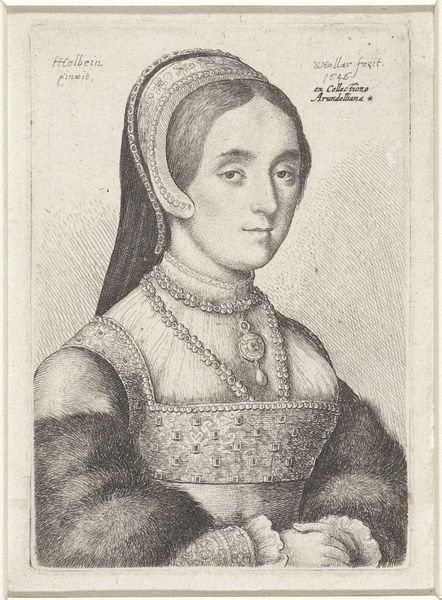
metal, engraving
#
portrait
#
baroque
#
metal
#
old engraving style
#
line
#
portrait drawing
#
engraving
Dimensions: height 160 mm, width 124 mm
Copyright: Rijks Museum: Open Domain
Curator: At first glance, it appears cold, somehow distant. The crisp lines make it feel austere. Editor: Let's take a closer look at "Portret van Bona Filiberti," an engraving created sometime between 1585 and 1642 by Agostino Carracci. It currently resides in the Rijksmuseum. Curator: Engraving, right. So the pressure applied, the specific tools used to cut into the metal, all become quite crucial here. The labor involved to achieve this level of detail...it speaks of craft elevated to high art. We are looking at metal not as ornamentation but as a canvas. Editor: Absolutely, the medium is vital to understand the message here. Portraiture during this time served a powerful function, constructing and reinforcing social status. Look at the inscriptions framing Bona. Who was she, and what did Carracci and his patrons hope to convey about her through this imagery? Curator: I'm immediately drawn to the material opulence—the dress pattern, the headdress ornamented with fleur-de-lis... one can see a highly stylized and sophisticated consumption. I would be fascinated to trace the origin and trade routes for the materials to appreciate this fashion of that era. Editor: Those details are intriguing from a fashion history angle, yes, but how did such a portrait operate within the culture of the time? Engravings allowed for reproduction and wider dissemination of images. Did this circulate primarily among elites? Was it intended for a broader public to inspire or instruct about ideal feminine qualities? The context deeply shapes its meaning. Curator: So you are looking at audience reception? Fair. And I look at the method, which would allow this image to be spread easier with its lines and simple shading. Consider how the choice of line engraving shapes the viewer's experience through an industrialized approach for reproduction. The stark quality emphasizes her profile and conveys this idea of ideal nobility and the values associated with lineage in a very accessible manner. Editor: Indeed. Reflecting on it, the image serves as an interesting intersection between personal representation and public image-making during the early modern period. Thank you. Curator: Agreed. Food for further thought.
Comments
No comments
Be the first to comment and join the conversation on the ultimate creative platform.
